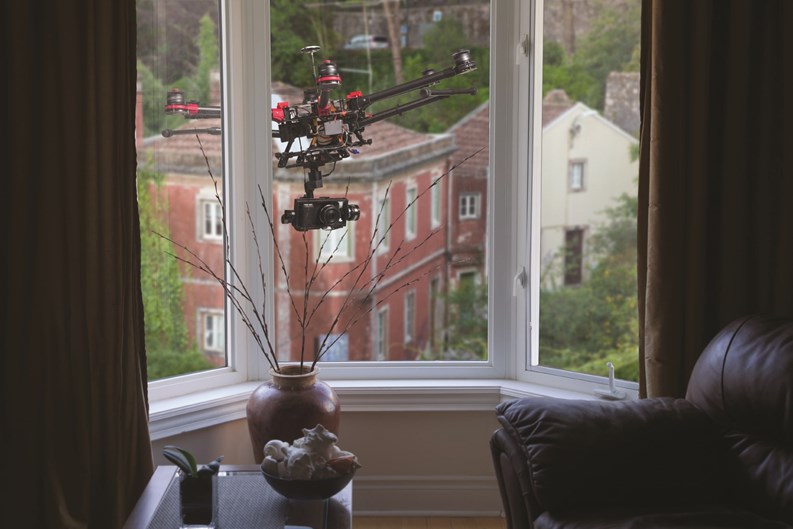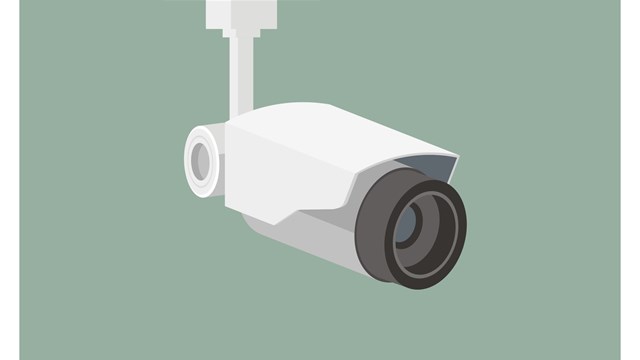Drones. Everyone has heard of them. No one is sure what to make of them. Are they destined to be the scourge of the skies? Or are they simply a brilliant convenience that will allow regular folks to complete everyday tasks from the comfort of their computers? While the jury is still out, and will likely remain so for some time, some co-op denizens are already enthusiastically rooting for the latter when it comes to routine property surveillance.
Glen Oaks Village is a garden apartment co-op complex aptly located in Glen Oaks, an area in northeast Queens. According to the official website, the property was built in 1947, shortly after World War II to help fill a void of affordable housing for returning infantrymen. Originally a rental housing complex, it was converted to co-op in 1981. Per its board president Bob Friedrich, it’s the largest community of its kind in New York, consisting of 134 two- or three-story buildings spread over 110 acres. This means 2,904 garden-style apartments, 1,337 indoor garages, many more private outdoor parking spaces, two lighted tennis courts, a three-wall outdoor bocce court, and six playgrounds. This kind of sprawl can make simple tasks, like inspecting gutters for leaf blockage or checking for chimney and roof damage, nearly herculean, as workers need to ascend and descend ladders nearly a thousand times to properly canvass such a massive communal property.
Technobot
Not one to be satisfied with the status quo, Friedrich surmised that there had to be a better way. Figuring that he could use technology to minimize both risk and labor, in 2015, he rallied both his co-op board and maintenance committee to invest in a drone—well within their budget at a seemingly reasonable $1,000—to take some of the burden off workers’ shoulders. And maintenance tasks have gotten a bit easier at Glen Oaks ever since adopting that majestic and metallic eye in the sky.
“It’s been fantastic,” enthuses Friedrich. “We fly the drone above the roof line, and we can go building by building to check gutters. We might find that out of 134 buildings, only 16 have leaf blockage, and thus we only need to send men up to that small portion of the property for maintenance, rather than cover the entire community.” For the less mathematically inclined out there, that’s only about 12% of the buildings that would need a human being to scale a ladder and thereby risk life and limb, which is by no means insignificant.
In addition to reducing safety concerns, Glen Oaks Village’s drone has proven to be cost-effective as well. “When you have 134 buildings, you have 134 chimneys,” Friedrich explains. “The only way to check how the concrete is faring at the capping involves climbing up with scaffolding. Most co-ops rarely even check their chimneys. But now we can do everything with the drone, and it eliminates that scaffolding expense.”
Of course, the advent of any new technology comes hand in hand with, of course, new rules, as well as both regulations and restrictions, and drones are currently the center of much debate. As various states and municipalities debate how tightly to police drone usage, the Federal Aviation Administration has already taken action to ensure safe use.
According to Leni Morrison Cummins, an attorney and a member of the real estate department at the law firm of Cozen O’Connor in Manhattan, for recreational use, the FAA requires that all drones weighing roughly half a pound to 55 pounds be registered online (Glen Oaks’ drone clocks in at a fairly low 10 to 12 pounds).
Flight Restrictions
And with the FAA, there are “built-up prohibitions” designed to prevent any accident or injury in populated residential areas. “One cannot fly a drone over people or moving vehicles and must remain at least 25 feet away from individuals,” says Cummins. “You need to contact an airport if you are within five miles of same. Two miles [in the case of] heliports.” Finally, for good measure, one must always operate a drone within his or her line of sight.
(It’s worth noting, that, while still very accurate, Cummins’ comments were made in the context of an earlier version of this article that ran on Cooperator.com in January of this year.) Since then, as reported by Jack Nicas in The Wall Street Journal on February 24, the FAA is currently considering waiving restrictions pertaining to small drones flying over people. This could have ramifications on routine drone usage involving package delivery and other commercial tasks, and could very well even make drone use more accessible for condos and co-ops. Stay tuned for pertinent updates.
Law and Liability
It’s worth noting that more than 20 states have approved drone laws this year, as have major cities like Chicago, Los Angeles and Miami, with many of the regulations placing tough restrictions on areas to fly and clamping down on the use of drones to snoop on neighbors. According to the New York Times, a December article reported that In Chicago, drones are now prohibited above schools, libraries, churches and private property without permission. In Miami, drones are banned within a half-mile radius of a “large public event,” and the police are able to use jamming technologies to take them down. In Los Angeles, drone users who operate near airports can face up to six months in jail. In New York City, several drone-related bills have been proposed at the City Council level but have not seen traction and are being held over in committee.
And, where potential legal ramifications go, insurance issues follow. As Ed Mackoul, president of the insurance brokerage, Mackoul & Associates in Island Park, New York—a company that specializes in insurance for cooperatives, condominiums and apartments, explains: “I see a lot of liability issues with either owners or board members utilizing drones. While drones can be helpful in a number of areas, typically it would be the vendors hired by the board that would have the best use for them, such as a contractor tasked with inspecting the building’s façade.”
“Additionally,” says Mackoul, “the insurance company for the building may need to use them in the event of a claim, as they can be used for search and rescue. The best use of drones that I can think of, from a board perspective, would be for security measures, much like closed-circuit television. I don’t see any positives at all from an insurance point of view were individual owners to use them. They could damage the building were they to crash. If a board’s drone caused such damage, its only recourse for reimbursement would be the insurance company and not another party, as the board would be at fault. And were a drone to cause an injury on the property, whether it was operated by the board or an individual, the co-op or condominium would more-than-likely be named in a lawsuit.”
Protecting Against Injury
(Indeed, injury to civilians appears to be a main concern of recreational drone debates both nationally and worldwide, with many municipalities hotly debating the cost/benefit analysis associated with their increased use.) In New York City, for example, in September 2015, a teacher flew a drone that crashed into the stands at the U.S. Open in Flushing Meadows. Luckily no one was injured.
A March 6th Salon op-ed by Rick Schmitt and Stuart Silverstein of FairWarning—a Los Angeles-based nonprofit investigative news organization focused on public health and safety issues, delves into many of these issues, as, according to the piece, “sales of drones weighing more than a half-pound” are expected to reach 1 million this year, amplifying fears of mid-air collisions and the various collateral damage that may ensue from their proliferation in the skies.
It’s also leading to quirky stories such as this. A recent article by Abby Haglage in The Daily Beast reported that a Dutch company called Guard from Above is currently working on training bald eagles to take out drones. What does that have to do with a condo in Queens? Nothing, really. But it just goes to show you to what lengths the issue has reached public consciousness.
But while the aforementioned safety issues, legal ramifications, and insurance concerns—not to mention the potential for invasion of privacy that stems from what is ostensibly an unmanned flying camera gliding about a community—could certainly give one pause before incorporating a drone into regular co-op routine, Friedrich remains confident.
"The rules in place are fine with us," says Friedrich. "We're careful to only fly over roofs." He also notes that the drone has a fail-safe button, that when it detects a low battery, loses a signal, or the operator loses visual contact, it automatically returns from where it was released.
“Our drone is light, it’s well-made, it has a revolving camera,” he says. “It’s a good way to survey the infrastructure of your community, the condition of various parts of the building, and it’s been working pretty well. We’re happy with it. I would definitely recommend this to other large co-ops. We've really eliminated a great exposure while increasing safety."
Michael Odenthal is a staff writer at The Cooperator.










Leave a Comment